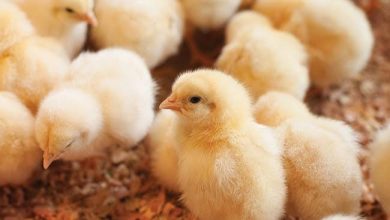ESSENTIAL OILS AS A FEED ADDITIVE IN POULTRY

Karmakar Neha Debasish1* and Sudhanya Nath2
1M.V.Sc Scholar, Department of Animal Nutrition, College of Veterinary Science & Animal Husbandry, Junagadh Agricultural University, Junagadh, Gujarat – 362001 2Phd Scholar, Department of Animal Nutrition, West Bengal University of Animal & Fishery Sciences, West Bengal – 700037
Abstract
Arrival of resistance to antibiotics has generated the prerequisite of substitution of antibiotics with other potential sources like probiotics, prebiotics, organic acids and essential oils. Essential oils are derived from various plants as secondary metabolites and act as an alternative of antibiotics. Among the alternatives, essential oils are purely natural source, safer and free from residues. They act as an antimicrobial, antioxidant, digestive stimulant and immunomodulator. Essential oils work individually and also shows synergistic effect with individual essential oils by which they enhances the effect of other feed additives.
Keywords: Essential oils, Antioxidant, Digestive Stimulant, Immunomodulator, Feed additives
Introduction:
Many countries are concerned and have restricted or even banned the use of antibiotics as feed additives due to its harmful effect that gets transmitted and proliferated though the food chain for a longer duration of time. The limitation on the use of antibiotic growth promoters as a feed additive have directed nutritionists and feed manufacturers to develop a safer and natural alternative for the poultry industries. Medieval pharmacy has proposed the term ‘volatile oil’ (Hay and Waterman, 1993). Essential oils are considered as a mixture of volatile compounds that are derived from the natural sources i.e. plants (flowers, leaves, buds, seeds, bark, herbs, wood, fruits and roots) and they are named by their aromatic characteristics, which is generally decided by considering their source of origination (Oyen and Dung, 1999). Essential oils mainly enhance the productivity and may give promising effect as growth and health promoters. They are procured by several methods like fermentation, extraction process and stream distillation. Among them, steam distillation is widely used method for commercial production. Essential oils differ in their characteristics like odor, chemical composition and are soluble in organic solvents. These oils are sensitive towards heat and light sources, so they are stored in dark bottles and at cool places (Krishan and Narang, 2014).
Classification of essential oils:
Essential oils are divided into two classes: terpenes and phenylpropenes. Terpenes are sub-divided on the basis of 5-carbon isoprene unit as mono, sesqui and diterpenes; where the numbers of isoprene units are 2, 3 and 4, respectively. Phenylpropenes consist of 6-carbon aromatic ring with a 3-carbon side chain (Clegg et al., 1980).
Properties of essential oils:
• Antimicrobial property: The antimicrobial activities of essential oils mostly depend on the cumulative action of different chemical component of oils on different part of the cell (Burt, 2004). Mechanism of action includes different activities, i.e. membrane disruption by terpenoids and phenolics, metal chelation by phenols and flavonoids and the effects of alkaloid on genetic material act as an inhibitory characteristic on the growth of microorganisms (Cowan, 1999). Essential oils are most effective towards gram-positive bacteria as compared to gram-negative bacteria (Burt, 2004). The outer membrane of gram-negative bacteria surrounding the cell wall, limits the invasion of hydrophobic compound through its lipopolysaccharide membrane (Vaara, 1992).
• Antiparasitic property: Various plants and their essential oils are considered to exhibit antiparasitic properties, for e.g., seeds of garlic, onion and mint. They are found to be effective against gastrointestinal parasite. Birds infected with coccidial parasites shows retarded growth as compared to non-infected birds. Carvacrol and thymol are the main ingredients of oregano oil that acts as an anticoccidial agent against Eimeria tenella (Giannenas et al., 2003).
• Antioxidant property: Essential oils can donate a hydrogen ion or an electron to free radicals and have ability to delocalize the unpaired electron within the aromatic structure; thus, have a protective role in the biological system against oxidation (Fernandez-Panchon et al., 2008). Phenols are more potent antioxidant as compared to vitamins E, C and carotenoids (Rice-Evans et al., 1997).
• Anti-inflammatory property: Essential oils resembling anti-inflammatory properties are terpenoids and flavonoids. These compounds mainly suppress the metabolism of inflammatory prostaglandin (Craig, 2001), like chamomile, marigold, liquorice and anise plants having anti-inflammatory properties (Srinivasan, 2005).
• Immunomodulatory property: Essential oils along with other components can be supplemented into the diet of animals such as garlic. Garlic acts as a stimulating substance which increases the production of antibodies against Salmonella enteritidis, Pasteurella multocida and Leptospira Pomona (Szigeti et al., 1998). The immunomodulatory effect of garlic is an effective way to enhance the production of interleukins, tumor necrosis factor and interferon. (Hanieh et al., 2010).
• Stimulation of digestion: Essential oils stimulate the digestive secretions like bile and mucus, and enhance the activity of enzymes (Platel, 2004). In broiler birds, essential oils stimulate the secretion of trypsin, amylase and jejunal chyme (Jang et al., 2007) and reduce the adherence capacity of the pathogenic microorganisms into the intestinal wall (Jamroz et al., 2006). Whereas, the supplementation of probiotics in combination with essential oils decreases the microbial load in the intestine (Marappan et al., 2013).
Use of Essential Oils in Poultry Nutrition:
Poultry rearing with the replacement of antimicrobial growth promoters can be possibly done by using safest natural sources. Among the safest sources, essential oils act as a safer product to enhance the performance of birds. The important specifications for poultry farming are body weight, feed conversion ratio (FCR) and egg production (Krishan and Narang, 2014). Poultry mainly needs optimum nutrition, good environmental practices and hygienic managemental conditions to improve the quality and quantity of production. Many reports stated that garlic acts as a favorable source to improve the quality of eggs. The plant extract and spices as a single component or as a mixture acts as an effective source for improving the performance and health status of birds (Alcicek et al., 2004). A study was conducted on laying quails; result showed that there was positive effect of essential oils on the egg production and FCR (Cabuk et al., 2014). According to Lovkova et al. (2001), higher body weight gain was observed in broiler birds by supplementing peppermint diet. When garlic powder was included in the diet of laying hen, it increased the egg production (Khan et al., 2007). Addition of essential oils in the diet of commercial layers during the heat stress condition was found to be favorable for the quality of egg and helped in buildup of good immune status of the birds. During excessive hot climate, birds are usually in stress condition which leads to sudden drop in egg production, a greater number of egg breakage and high mortality rate in birds. During such circumstances essential oil acts as an effective source to reduce summer/ heat stress in birds (Ozek, 2011).
Conclusion:
Many researchers have studied about various beneficial effects of essential oils in the poultry nutrition with variations in findings. To conclude, essential oil and its components are proven to have better in vitro efficiency by acting as antimicrobial, immunomodulating and having anti-inflammatory properties. Essential oils can also act as a substitute source to antimicrobials in poultry industries; its major role is to improve the production quality in birds due to numerous nutraceutical properties.
References:
Alcicek, A.; Bozkurt, M. and Cabuk, M. 2004. The effect of a mixture of herbal essential oils, an organic acid or a probiotic on broiler performance. South African Journal of Animal Science. 34(4): 217-222.
Burt, S. 2004. Essential oils: their antibacterial properties and potential applications in foods – a review. International Journal of food microbiology. 94(3): 223-253.
Cabuk, M.; Eratak, S.; Alçicek and Bozkurt M. 2014. Effects of herbal essential oil mixture as dietary supplement on egg production in quail. The Scientific World Journal. 573470.
Clegg, R. J.; Middleton, B.; Bell, G. D. and White, D. A. 1980. Inhibition of hepatic cholesterol synthesis and S–3–hydroxy–3–methylglutaryl–CoA reductase by mono and bicyclic monoterpenes administered in vivo. Biochemical Pharmacology. 29(15): 2125–27.
Cowan, M. M. 1999. Plant products as antimicrobial agents. Clinical Microbiology Review. 12(4): 564-582.
Craig, W. J. 2001. Herbal remedies that promote health and prevent disease. In: Watson RR (Ed.). Vegetables, fruits, and herbs in health promotion. CRC Press, Boca Raton, Florina, USA. Pp-179-204.
Fernandez-Panchon, M. S.; Villano, D.; Troncoso, A. M. and Garcia-Parrilla, M. C. 2008. Antioxidant activity of phenolic compounds: From in vitro results to in vivo evidence. Critical Reviews in Food Science and Nutrition. 48(7): 649-671.
Giannenas, I.; Florou-Paneri, P.; Papazahariadou, M.; Christaki, E. and Botsoglou, N. A. 2003. Effect of dietary supplementation with oregano essential oil on performance of broilers after experimental infection with Eimeria tenella. Arch Tierernahr. 57(2): 99-106.
Hanieh, H.; Narabara, K.; Piao, M.; Gerile, C. and Abe, A. 2010. Modulatory effects of two levels of dietary Alliums on immune response and certain immunological variables, following immunization, in White Leghorn chickens. Animal Science Journal. 81(6): 673-680.
Hay, R. K. M. and Waterman, P. G. 1993. Volatile oil crops: Their biology, biochemistry and production. Longman Scientific and Techival. Great Britain. Aron.
Jamroz, D.; Wertelecki, T.; Houszka, M. Kamel, C. 2006. Influence of diet type on the inclusion of plant origin active substances on morphological and histochemical characteristics of the stomach and jejunum walls in chicken. Journal of Animal Physiology and Animal Nutrition. 90(5): 255-268.
Jang, I. S.; Ko, Y. H.; Kang, S. Y. and Lee, C. Y. 2007. Effect of a commercial essential oil on growth performance, digestive enzyme activity and intestinal microflora population in broiler chickens. Animal Feed Science and Technology. 134(3): 304-315.
Khan, S. H.; Sardar, R. and Anjum, M. A. 2007. Effects of dietary garlic on performance and serum and egg yolk cholesterol concentration in laying hens. Asian Journal of Poultry Science. 1(1): 22-27.
Krishan, G. and Narang, A. 2014. Use of essential oils in poultry nutrition: A new approach. Adv. Vet. Anim. Res. 1(4): 156-162.
Lovkova, M. Y.; Buzuk, G. N.; Sokolova, S. M. and Klimenteva, N. I. 2001. Chemical features of medicinal plants. Applied Biochemistry and Microbiology. 37(3): 229–37.
Marappan, G.; Kumaragurubaran, K.; Haranahalli, V. M.; Paramasivam T.; Manickam K.; Moorthy, D.; Bharemara L. B. and Purushothaman, M. R. 2013. Essential Oils as a Feed Additive in Poultry Nutrition. Advances in Animal and Veterinary Science. 2(1): 1-7.
Oyen, L. P. A. and Dung, N. X. 1999. Plant Resources of South–East Asia No 19. Essential–oil plants, Backhuys Publishers, Leiden.
Ozek, K.; Wellmann, K. T.; Ertekin, B. and Tarım, B. 2011. Effects of dietary herbal essential oil mixture and organic acid preparation on laying traits, gastrointestinal tract characteristics, blood parameters and immune response of laying hens in a hot summer season. Journal of Animal and Feed Sciences. 20(4): 575-586.
Platel, K. and Srinivasan, K. 2001. Studies on the influence of dietary spices on food transit time in experimental rats. Nutritional Research. 21(9): 1309-1314.
Rice-Evans, C. A.; Miller, N. J. and Papaganga, G. 1997. Antioxidant properties of phenolic compounds. Trends in Plant Science. 4(2): 152-159.
Srinivasan, K. 2005. Spices as influencers of body metabolism: An overview of three decades of research. Food Research International. 38(1): 77-86.
Szigeti, G.; Palfi, V.; Nagy, B.; Ine, E. and Nagy, G. 1998. New type of immune stimulant to increase antibody production generated by viral and bacterial vaccines. Magyar Allatorvosok Lapja. 120: 719-721.
Vaara, M. 1992. Agents that increase the permeability of the outer membrane. Microbiology Review. 56(3): 395-411



